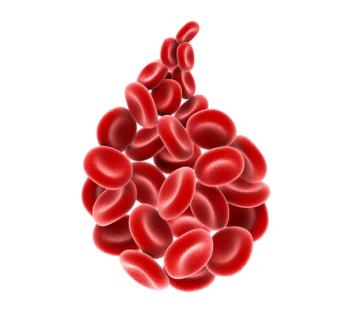
Acalabrutinib Plus Venetoclax To Be Evaluated in Treatment-Naive CLL/SLL
A non inferiority design was presented at ASH 2021 for acalabrutinib plus venetoclax in treatment-naive chronic lymphocytic leukemia or small lymphocytic leukemia.
The addition to acalabrutinib (Calquence) to venetoclax (Venclexta) was evaluated for efficacy in a noninferiority design compared with obinutuzumab (Gazyva) for patients with previously untreated chronic lymphocytic leukemia (CLL)/small lymphocytic leukemia (SLL).
This MAJIC study (NCT05057494) trial was previously presented at the 2021 American Society of Hematology Annual Meeting & Exposition, by Matthew S. Davids, MD, MMSc, from Dana-Farber Cancer Institute.
“MAJIC will help to inform selection of doublet therapy approaches for patients with CLL and SLL and help define the duration of venetoclax in combination with acalabrutinib or obinutuzumab,” Davids said in his presentation.
Previously, the Bruton tyrosine kinase inhibitors acalabrutinib and ibrutinib (Imbruvica), anti-CD20 monoclonal antibody obinutuzumab, and BCL-2 inhibitor venetoclax showed improvement in CLL outcomes compared with chemoimmunotherapy, according to Davids. Although effective, not all patients achieve undetectable minimal residual disease (uMRD) with fixed-duration obinutuzumab and venetoclax for 1 year.
Ibrutinib plus venetoclax has shown deep and durable responses in this setting previously, however toxicity such as neutropenia and cardiac events can be an issue, particularly in older patients with comorbidities. Acalabrutinib offers a more tolerable safety profile in comparison, according to data from the ELEVATE-RR trial (NCT02477696).
In the MAJIC trial, investigators will look at whether MRD-guided finite therapy with acalabrutinib plus venetoclax produces noninferior efficacy compared with MRD-guided finite obinutuzumab and venetoclax in these patients. The primary end point is investigator-assessed progression-free survival.
Key secondary end points include uMRD rates at sequential time points, overall survival, event-free survival, overall response rate, safety and tolerability, complete response rate per uMRD, and quality of life/patient-reported outcomes. There will also be exploratory analyses of correlative studies, MRD kinetics, and health care resource use.
About 750 treatment-naive patients with CLL/SLL will be randomized 1:1 in this trial. One arm will give acalabrutinib at 100 mg twice daily with 2 lead in cycles plus venetoclax started during cycle 3, including dose ramp-up, for 12 cycles. The other arm is obinutuzumab given intravenously at standard dosing plus venetoclax at standard dosing starting on day 22 of cycle 1, including dose ramp-up, for 6 cycles, followed by venetoclax alone for 6 cycles. Both arms have a total of 12 cycles. Patients will be stratified by IGHV status, TP53 status, and age.
Patients 18 years or older will be enrolled on the trial. They must have an ECOG performance status of 2 or less, and adequate organ function. Those with clinically significant cardiovascular disease within 6 months of screening, cerebrovascular disease within 6 months of the first study dose, or any class 3 or 4 cardiac disease will not be included. Patients with Child-Pugh B or C liver cirrhosis, prior or current malignancy, known bleeding disorders, uncontrolled autoimmune hemolytic anemia or idiopathic thrombocytopenic purpura, known history of infection with HIV or any active significant infections, or requirement for or current receipt of anticoagulation therapy with warfarin or equivalent vitamin K antagonist will not be included on the trial.
“The MAJIC study is planned to begin patient enrollment in the first quarter of 2022,” Davids concluded.
Reference
Davids, MS, Mato AR, Hum J, et al. MAJIC: a phase 3 prospective, multicenter, randomized, open-label trial of acalabrutinib plus venetoclax versus venetoclax plus obinutuzumab in previously untreated chronic lymphocytic leukemia or small lymphocytic lymphoma. Presented at: 2021 American Society of Hematology Annual Meeting & Exposition; December 11-14, 2021; Atlanta, GA. Abstract 1553.
Newsletter
Stay up to date on recent advances in the multidisciplinary approach to cancer.


















































































